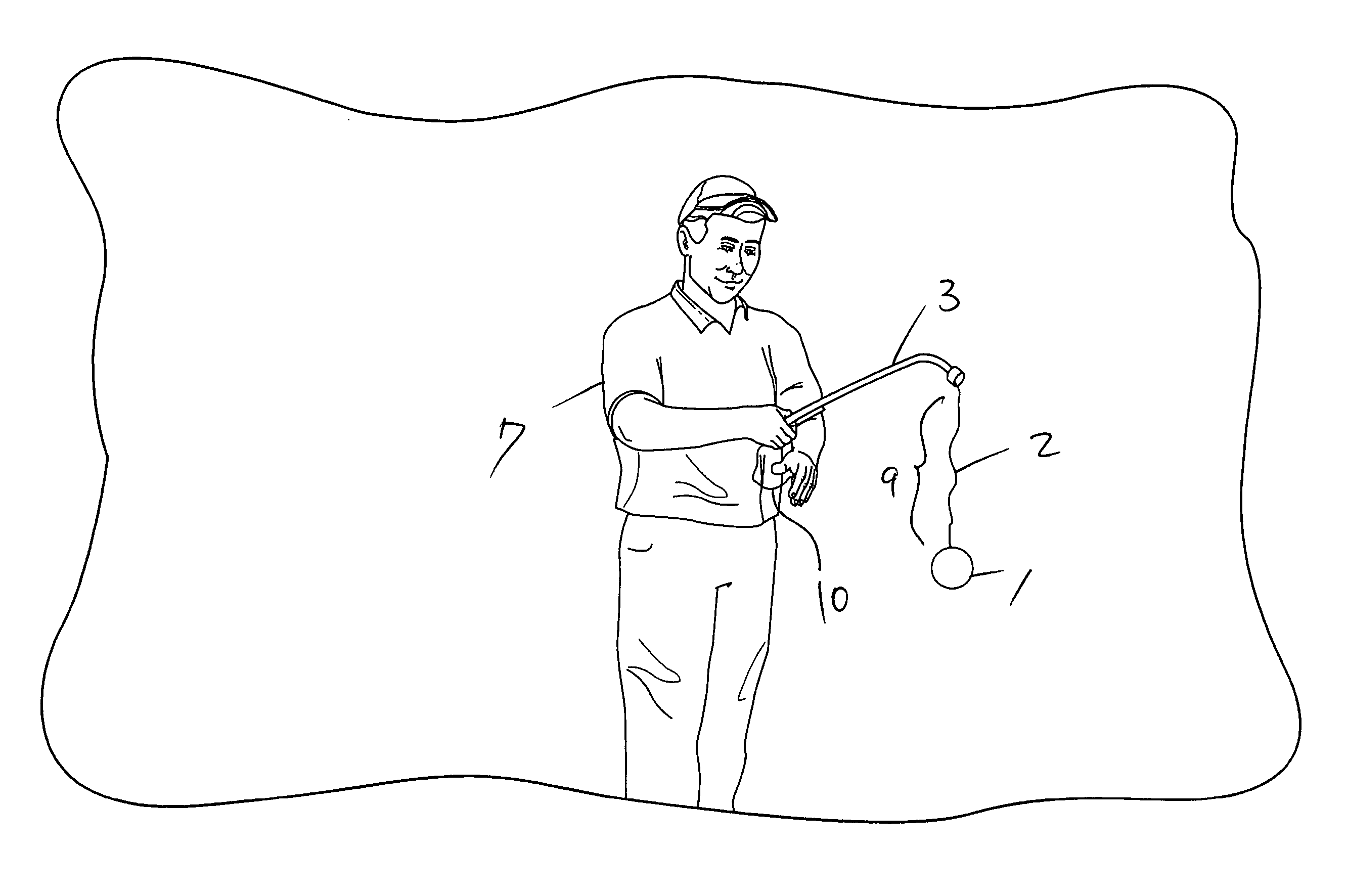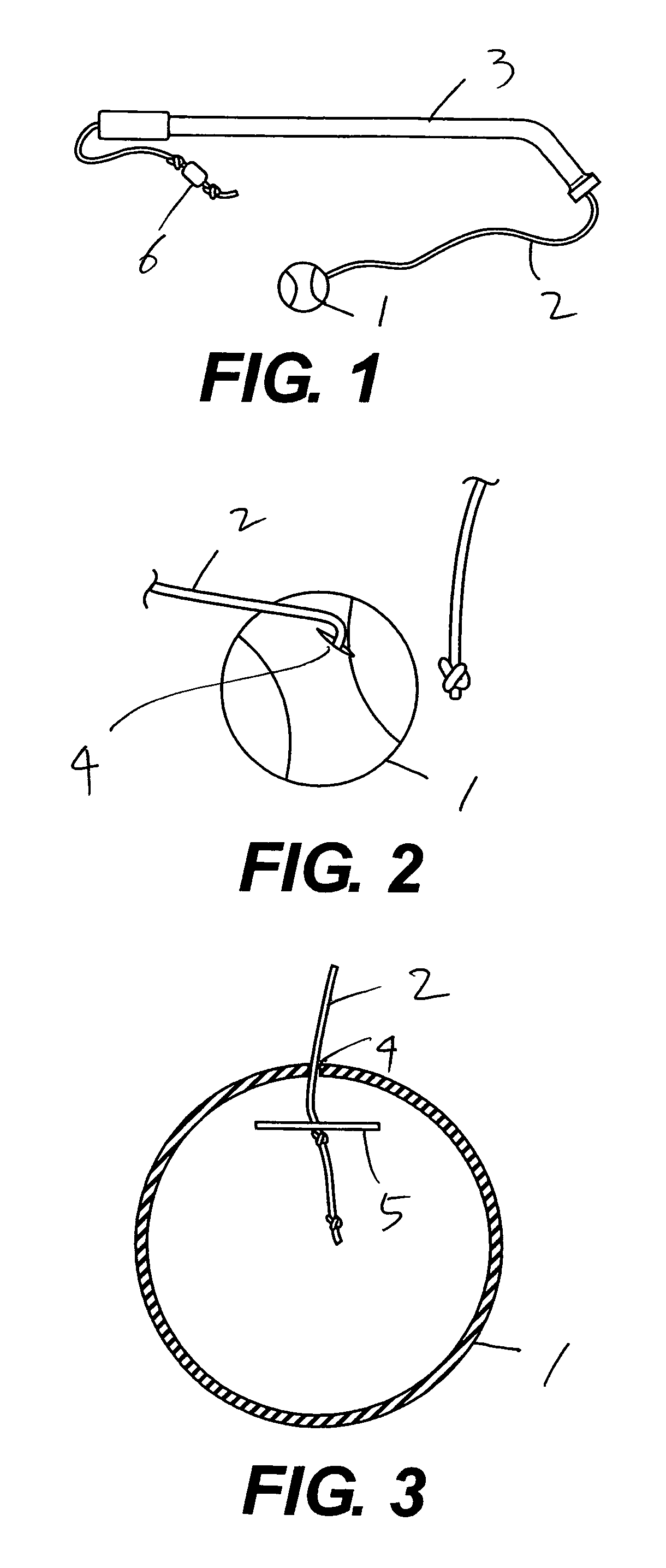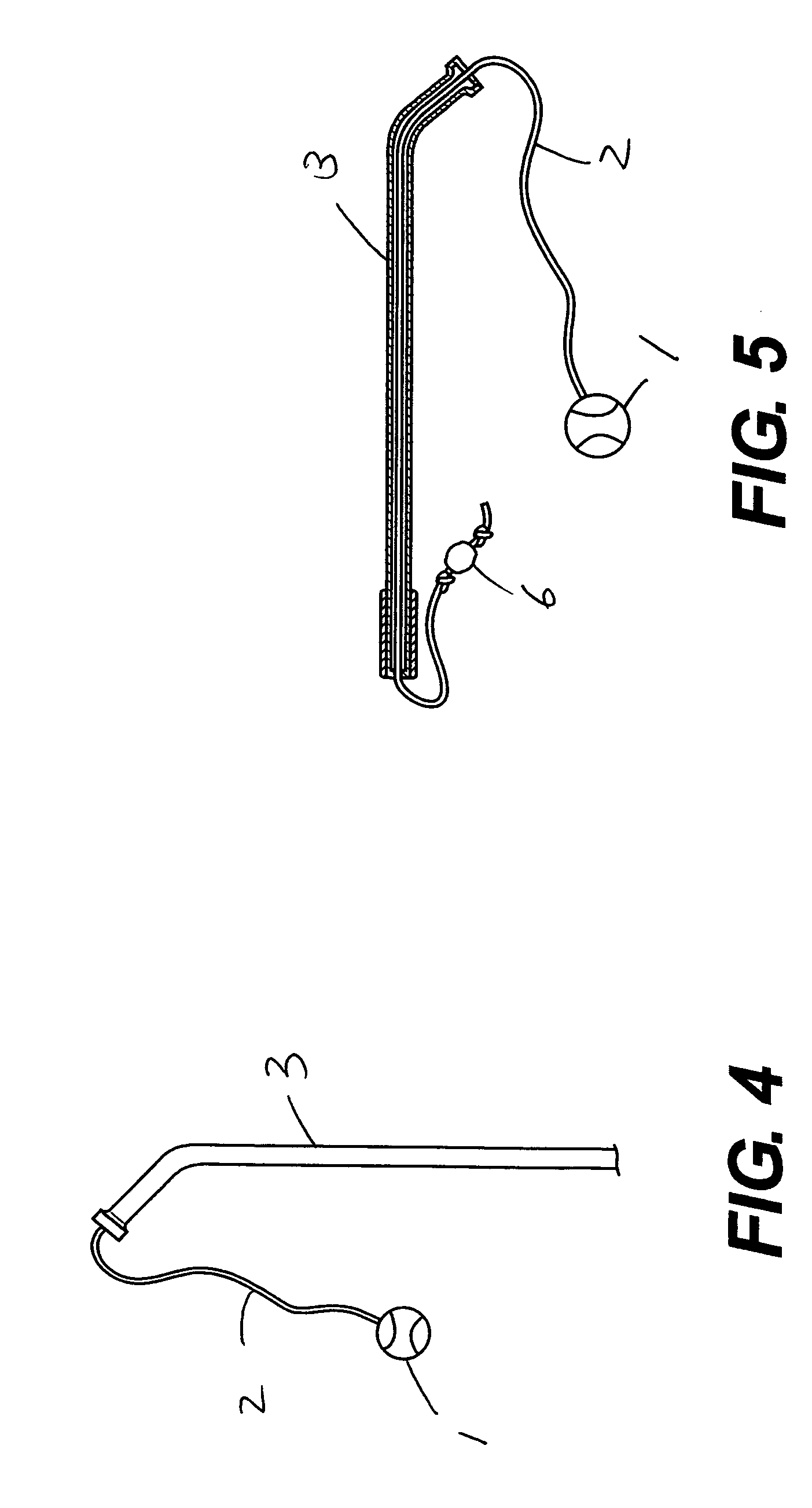Method and device for tennis training
a tennis and tennis technology, applied in the field of tennis training methods and equipment, can solve the problems of difficulty in repeatedly positioning balls, difficulty in adjusting the height of the target to be hit, and difficulty for instructors or machines to locate balls
- Summary
- Abstract
- Description
- Claims
- Application Information
AI Technical Summary
Benefits of technology
Problems solved by technology
Method used
Image
Examples
Embodiment Construction
[0041]FIG. 1 shows one embodiment of a tennis training device in the present invention. The tennis training device comprises a ball 1, a rope 2, and a hollow pole 3.
[0042] A portion of a first end of the rope 2 is coupled with the ball. For example, as shown in FIG. 2, the ball 1 comprises a cut 4 on its surface. The depth of the cut is approximately 2.5 inches. Preferably, the length of the cut is approximately the same as the diameter of washer 5. FIG. 3 shows a cross-section of the ball 1 into which the washer 5 is inserted. A portion of the first end of the rope 2 is knotted with the washer. A portion nearer the first end of the rope 2 than the portion knotted with the washer may be also knotted. The washer is inserted through the cut 4 into the ball 1. Then, the rope 2 is pulled to secure the position of the washer in the ball 1 to be approximately parallel to the cut on the surface of the ball so that the washer cannot be pulled out of ball.
[0043] An entire part of the hollo...
PUM
 Login to View More
Login to View More Abstract
Description
Claims
Application Information
 Login to View More
Login to View More - R&D
- Intellectual Property
- Life Sciences
- Materials
- Tech Scout
- Unparalleled Data Quality
- Higher Quality Content
- 60% Fewer Hallucinations
Browse by: Latest US Patents, China's latest patents, Technical Efficacy Thesaurus, Application Domain, Technology Topic, Popular Technical Reports.
© 2025 PatSnap. All rights reserved.Legal|Privacy policy|Modern Slavery Act Transparency Statement|Sitemap|About US| Contact US: help@patsnap.com



